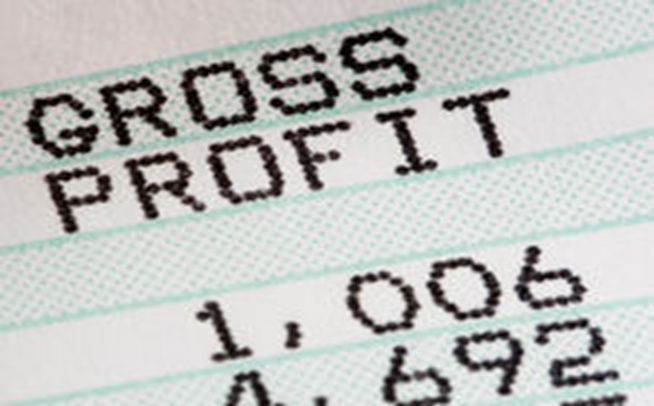Gross profit margin tool used to ascertain a company’s financial health by calculating the amount of money left over from product sales after subtracting the cost of goods sold (COGS). Sometimes it is also called gross margin ratio and is frequently expressed as percentage of sales.
Gross profit margin is a very valuable tool of financial measurement for the company management as well as investors as it indicates the efficiency with which a company can produced and sell more products before extraneous costs are deducted.
What Is Gross Profit Margin?
Gross profit margin is a financial ratio that measures how efficiently a business can produce one product or more products and sell them. It can be calculated for individual products as long as a company can also differentiate the direct cost of goods
The cost of goods sold is made up company’s direct cost and not indirect costs. Direct costs are variable in nature. Few examples of direct costs are labour costs for producing a product, raw materials needed etc.

© Meenna | Megapixl.com
How is it calculated?
Gross profit margin is calculated by reducing the cost of goods sold from net sales which includes gross revenues minus returns, allowances and discounts. The result of that is then divided by net sales to get gross profit margin in percentage terms.
What Does the Gross Profit Margin mean for investors
The gross profit margin usually tells you the state of management practices. If it is stable, Company can be considered to be doing well. But if it fluctuates, it indicates weak or poor management practices. However, the exception is if a company makes some operational changes, the costs will also fluctuate and that should not be alarming for the investors.
For instance, if a company decides to automate a certain process, the initial investment cost will be factored in but ultimately the cost of goods will decrease due to less deployment of labour. Another factor that may influence gross margins is also product pricing adjustments.
Investment analysts use gross profit margin to compare a company’s performance with its competitors reflecting on the business model.
Let us see this example: Let us assume that two companies produce similar products with similar quality and the same character. If Company one company finds a cheaper way to produce its products at almost 1/5th cost, it will have a higher gross margin because of its reduced costs of goods sold, thereby giving the company a competitive edge.
Gross profit margin versus net profit margin
While gross profit margin is a percentage of revenue that exceeds cost of goods sold, profit margin is the ratio of net profits to revenues of a company. A high gross profit margin indicates that a company is getting profits above its costs and net profit margin shows how much each dollar of revenue becomes profit.

© Miflippo | Megapixl.com
Gross profit versus gross profit margin
People also get confused between gross profits and gross profit margin. So how to distinguish them? Gross profit margin is always expressed in percentage terms gross profit is expressed in dollar terms. The gross profit is the amount of revenue that a company generates above its direct production costs. It can be expressed in millions or billions, but gross profit is not that useful to investors or analysts as it is a mere standalone figure and doesnot give comparative picture. Gross profit margin is more important for analysts as it compares with cost of goods sold and the revenue.
To show the difference, consider a company showing a gross profit of $1 million. At first instance the figure may seem very impressive, but if further investigation reveals that while the gross margin I 1% and an increase in production costs is 2% then the company is losing money.
What is a good profit margin
Investors can interpret their company's financial ratios. Here are some ways:
Company production efficiency
Gross profit margin is a reflection of a company’s production process. A higher profit margin means that a company is producing its products more efficiently. When assessing a company’s gross profit margin, the financial managers do a comparative study. Definitely, a lower gross profit margin shows that a company is not producing their products very efficiently. It is also important to determine whether the gross profit margin is dropping across time and whether it is lower than companies in the same industry. If that is the case a detailed study might be needed.
Low Sales
A low sales volume by itself may not mean that the Gross profit margin is down but if the sales volume is not enough to cover the expenses such as sales and administrative cost, then it reflects on the gross profit margin.
Poor Pricing Structure
A poor pricing plan can also impact the gross profit margin.
However, if the gross profit margin is much lower or higher than in other years of data, one should find out the reason. Also, if there are variations in the as compared to other companies, one should check out as well.
So overall, gross profit margin is a good indicator of how efficiently a company is able to make money from products and services. It measures profit as a percentage of sales revenue. It basically focusses on sales revenue keeping aside all other expenditures like corporate, legal or even income from interest.
It also helps in seeing how well the company is managed. High gross profits suggest that management is effective at generating revenue based on the labour and other direct costs.
 Please wait processing your request...
Please wait processing your request...